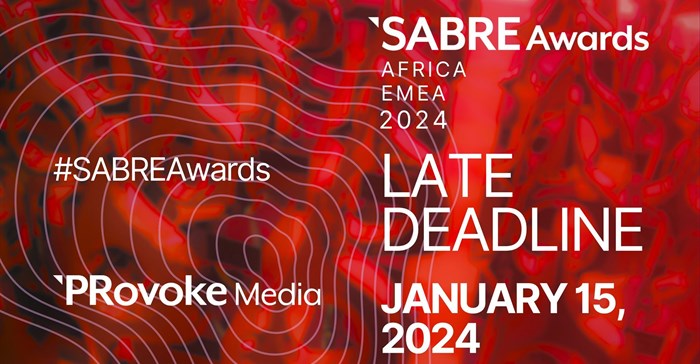
Provoke Media says most awards competitions look for the same things—big, bold creative ideas; flawless execution; an impact on business results, and while it also values those things, the Sabre judges also look for several other details as they review entries.
These include:
Was the agency brave to suggest the strategy it did? Was the client brave enough to agree to it? Courage comes in many forms—admitting a mistake, fighting for an unpopular principle, taking a creative risk, breaking a taboo.
Did the core creative idea seem to arrive organically from the DNA of the company? Was it a true reflection of the organization’s mission, its vision, and its values? Did the explicit or implicit story it told about the company fit with the way customers, employees and community actually experience the company and its brands?
In the past, it might have been enough for a public relations campaign to deliver a message. But the best campaigns today go beyond that, prompting engagement, and encouraging the audience to respond both emotionally and in some tangible way: joining the conversation, participating in the debate, offering feedback, and getting involved in a cause or issue.
The best public relations campaigns take into account the media consumed by a diverse public and make an effort to engage with people of all races, cultures, and orientations. Sabre judges will look for evidence that some thought was given to issues of diversity and inclusion in the planning and execution of winning campaigns.
Public relations campaigns have always been about persuading people to share information. In the past, it was typically a journalist sharing with his or her readers. But today it can involve almost any audience—bloggers, influencers, opinion leaders, ordinary people—sharing with their friends, via social media or good old-fashioned conversation, amplifying the message and giving it credibility and immediacy.
Did the campaign lead to a single transaction or did it contribute toward a lasting relationship? Some campaigns are fleetingly amusing, a momentary distraction; others leave a lasting impression about the company or the brand, usually by making an emotional connection, convincing stakeholders that the company genuinely cares about something close to their hearts.
Honesty has always been important. It is even more important today, because in an age of radical transparency any dishonesty—and manipulation or deceit—will be discovered so much more quickly and punished so much more severely than in the past.
There are two ways in which good public relations campaigns can change behaviour. The first is by affecting the behaviour of the audience (employees, consumers, voters, communities) so that they are more supportive of an organisation’s objectives. Less common—but often more meaningful in terms of long-term relationship building—a good PR campaign can change the behaviour of the organisation and its management, aligning it with stakeholder expectations. Great campaigns may do both.